We had set our alarms for 5.20am the next morning. Somehow 5.30 didn’t seem quite enough for two people to be ready and present for a 6am safari departure. It was tough. The activity, anxiety and travel was beginning to wear on us. The early start, before sunrise, was the reverse of the evening before. It was cold at the outset, and so we were rugged up, and Felix’s polar fleece ponchos were gratefully received. Bouncing through the cold, damp morning air woke us up in a hurry. Having recently completed the Southern Ocean-course -in- zodiac-hair-and-makeup, I did not consider any preparation beyond clean face and teeth, but the Canadian woman looked like she’d just stepped out of a fashion spread. I tried to keep some distance between us. I did wonder how early she had to get up to look like that, but only for a moment. She was nice, and smart too, I hasten to add.
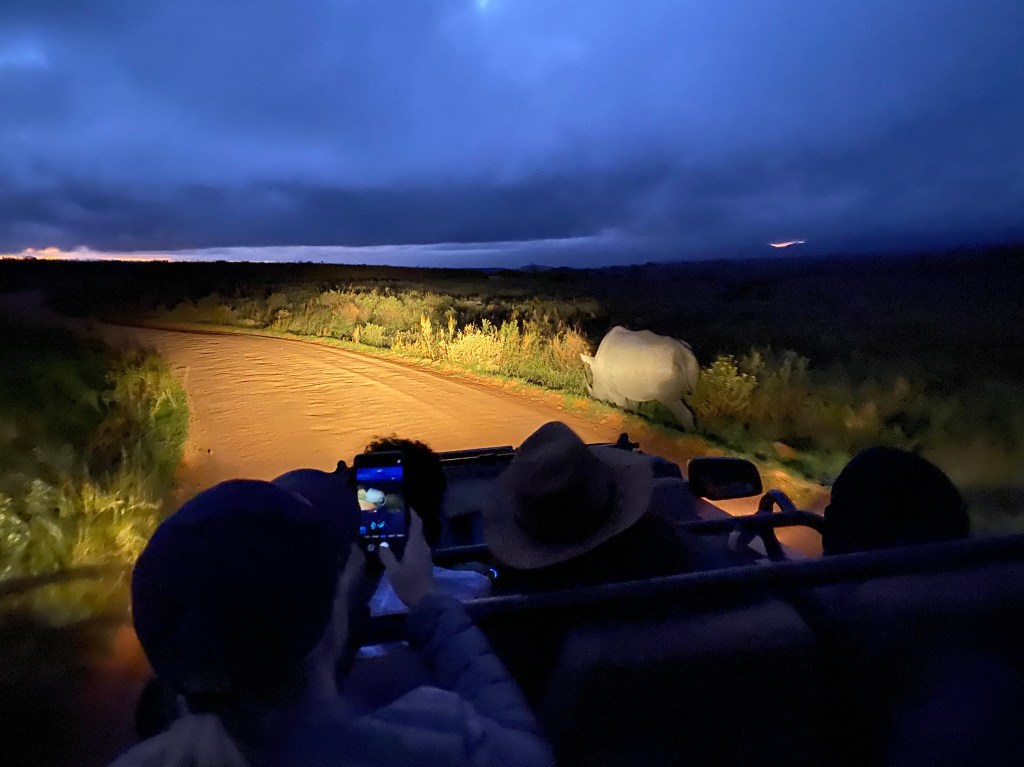
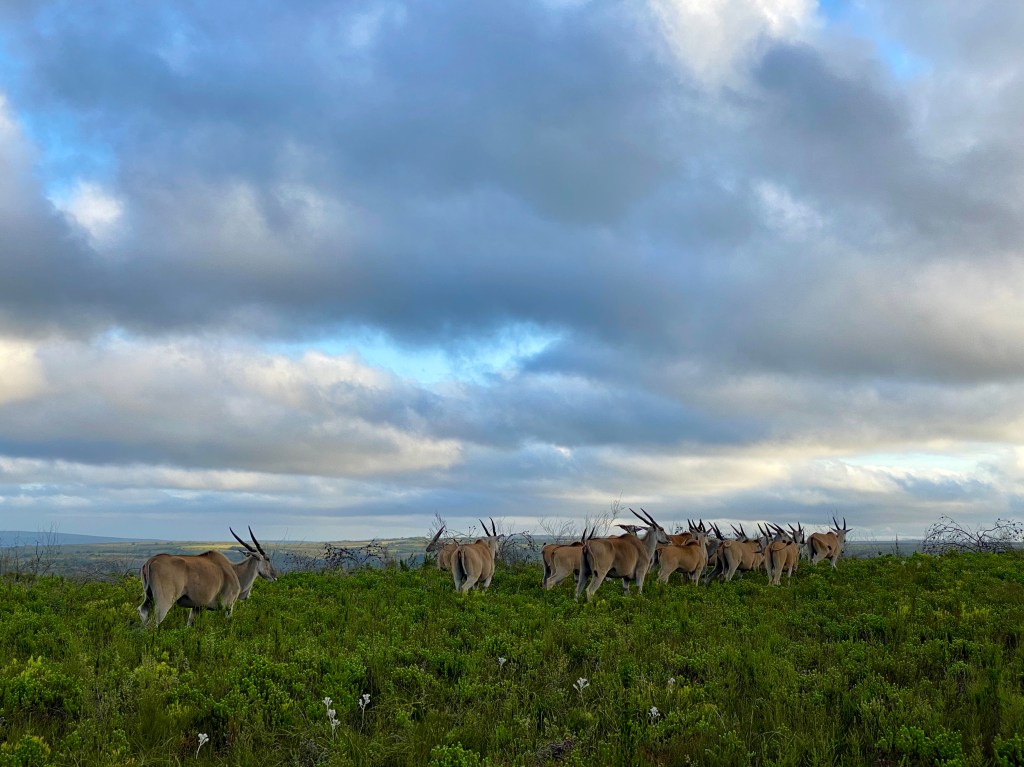
There was coffee and tea, again, which we did not have–breakfast would be after we returned in 2-3 hours. A short while out, we spotted a herd of Elands atop a ridge. Felix announced we were going to try and find the lions, because they could be quite elusive and it might take several safaris to locate them. But of course during the search we saw many other animals. There were blue wildebeests, zebras and various kinds of antelope, cape buffalo, hippos, and baboons. We stopped for morning tea. I took photos of plants.




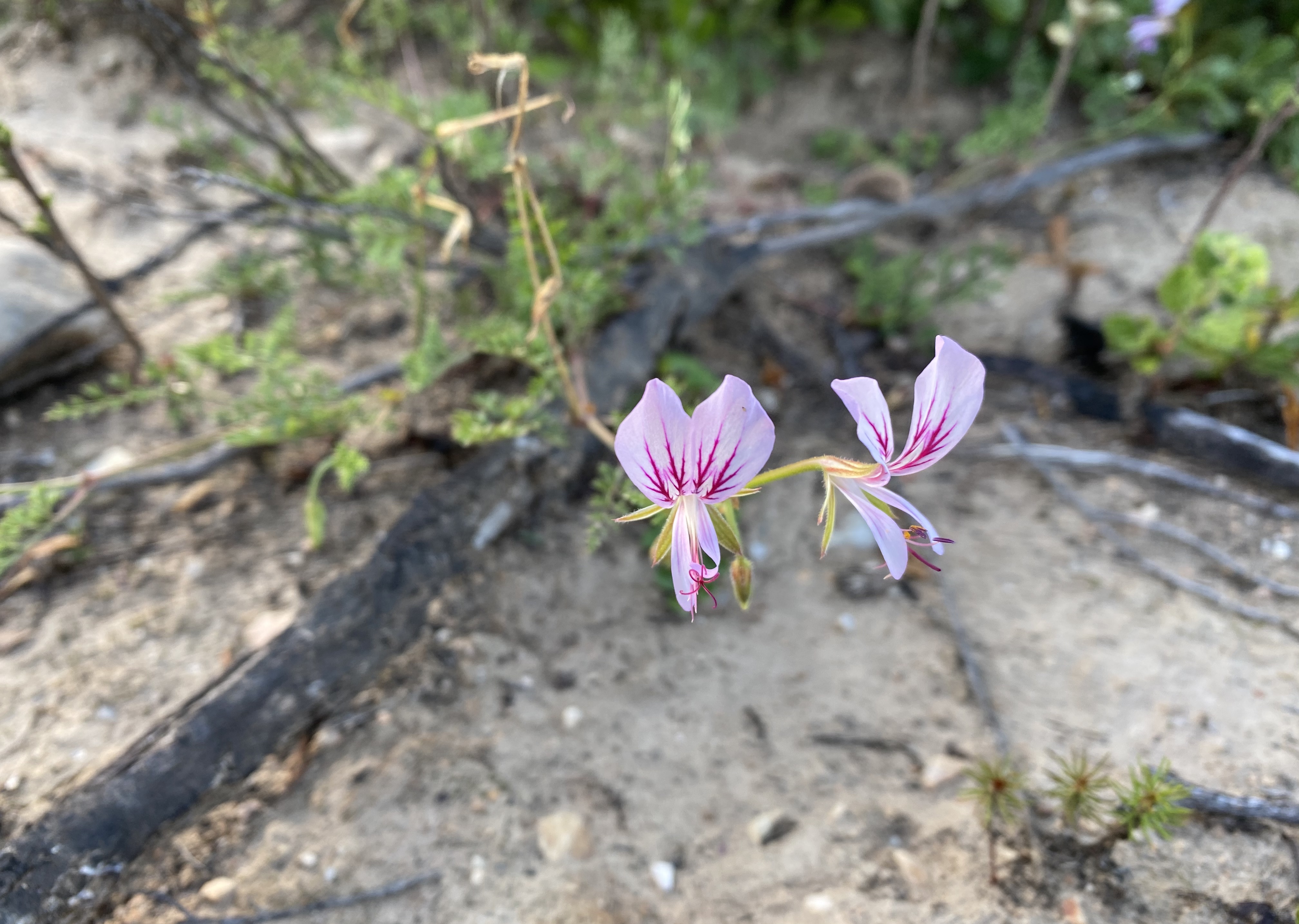
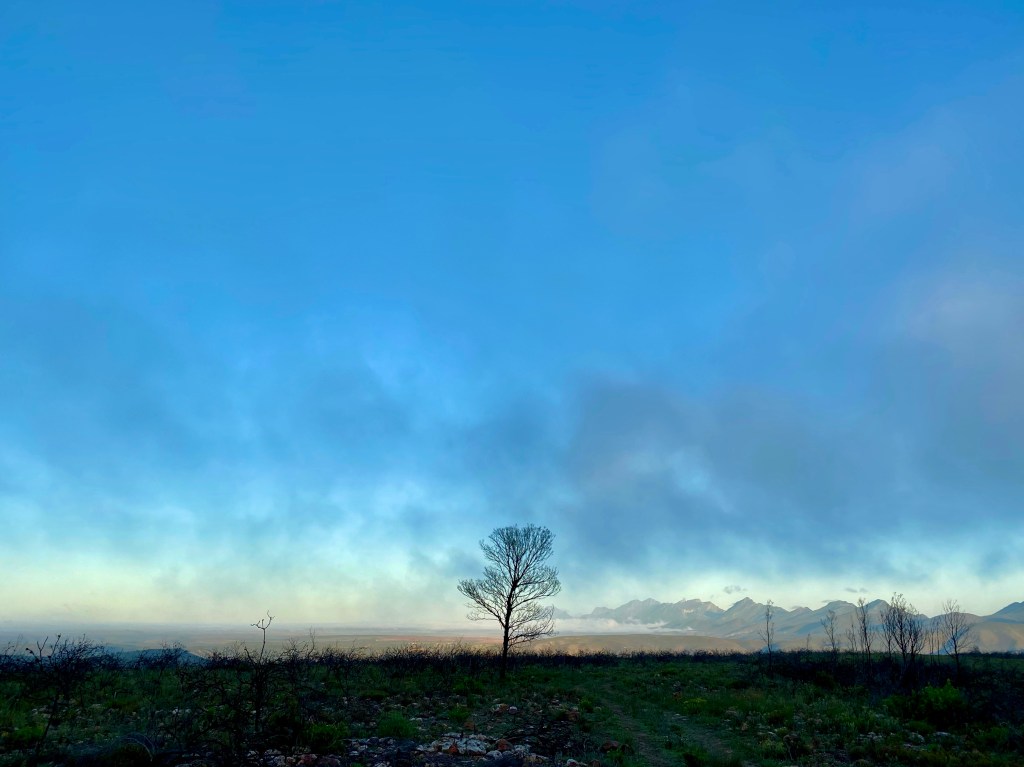


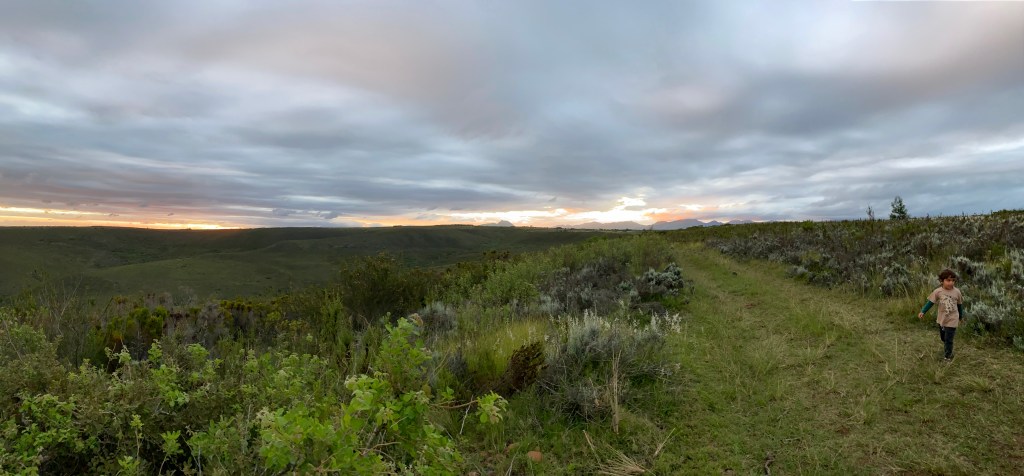

The search for lions was fruitless. Felix explained, during hunting was the most active they would be. After a kill and feeding, they laze around in the shade and sleep for days, making them very difficult to spot. He further explained there was only one pride of five lions in the whole of the 26,000 acres of the reserve. This was because the reserve followed a balanced approach in the numbers of animals of each type. They could cohabitate and live as nature intended, killing to eat as required. It was all self-sustaining. He said the staff never, ever intervened in the animal behaviours as they interacted with each other. Even when the animals occasionally roamed through the villa and lodge area, they were allowed to do their own thing, as long as ‘their own thing’ didn’t include human consumption. One night, some time back, guests were trapped in the lodge restaurant a couple of extra hours after they had finished their meals, due to the lions deciding to have a look around. No one had seen lions for days before we had arrived, or while we were there, so it was just not to be. Curiously, they were the animals we were least interested in seeing.


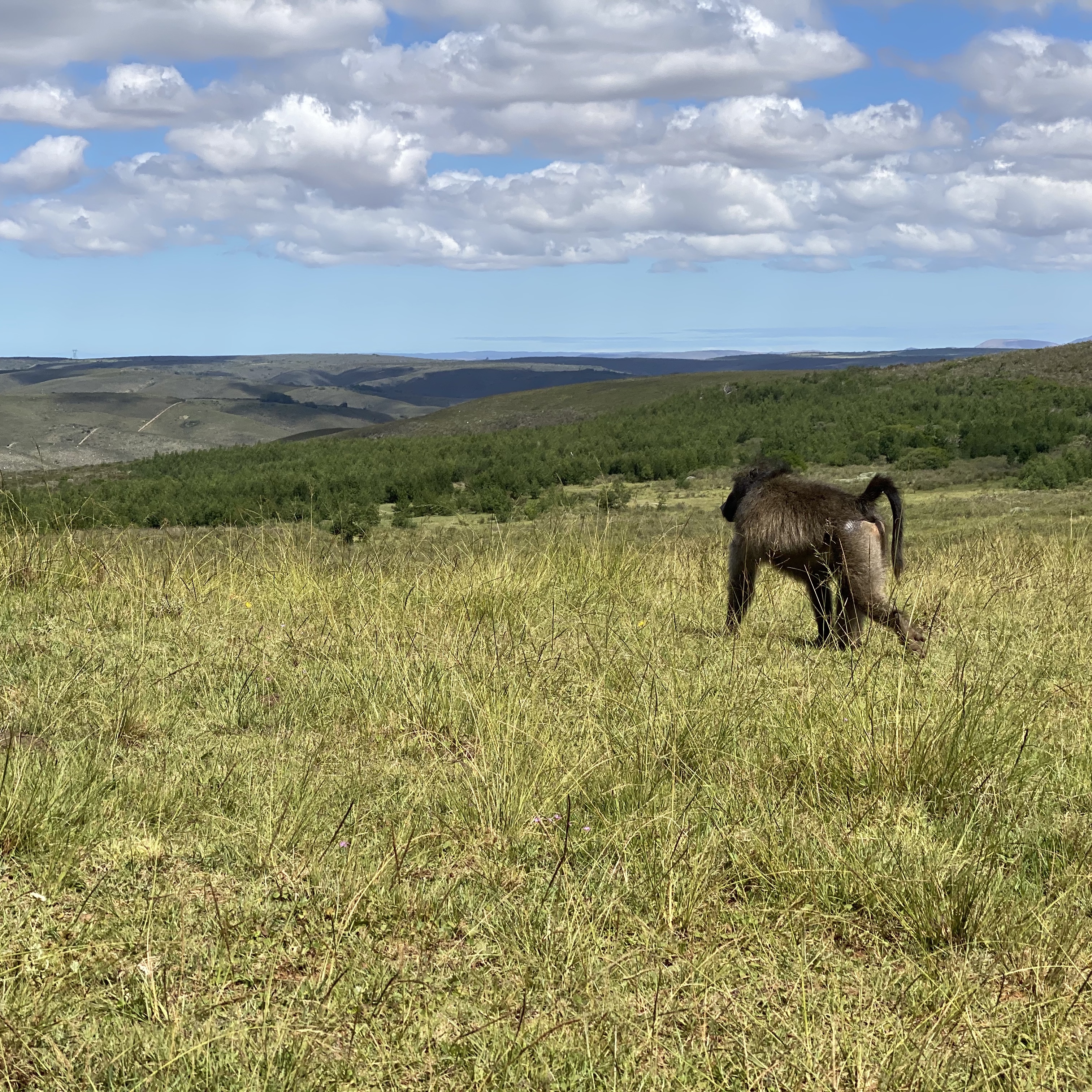


Every safari showed us a different aspect of the animals and the environment. We had five in all. Our last morning safari was an astonishing encounter, again with elephants. Felix found a small herd, moving across the hillside, eating grass as they moved. If I told you that he spotted the herd from over a kilometre away, you wouldn’t think it possible. He had the most incredible eyesight. When we got to the location, Felix pulled the vehicle right in the path of where he thought they would walk. Everyone, except the four year old, was quiet. You could hear the elephants breathe and tear the grass from the ground as they quietly moved through. It was an unforgettable few minutes. The video, which this template won’t allow me to load onto this blog, is on my instagram page if you want to have a look @amosthemagicdog. Also, my other favourite video of a herd of young impalas is there as well.
We were surprised when Felix asked us not to post photos of the rhinos. Poaching is still very dangerous for rhinos, and the metadata that poachers can get from photos helps locate them. Even though Gondwana is strictly protected, you can imagine how difficult it must be to protect all 26,000 acres of hills and valleys. In some cases the reserve has cut off most of the rhinos’ horns, to protect them if poachers should find them. Nothing to see here, fellas. But a couple of rhinos had their original, natural horns, proving that nature knows what she is doing. The graceful, tapered curve of the natural horns created the perfect foil to their otherwise bulky shape.
We were repeatedly reminded that the animals are wild. They are kind of used to the vehicles filled with humans, as long as there are no surprises, but the animals are still wild. I suppose in that regard they were like the penguins and seals we saw on the cruise. I’m sure they don’t miss us pesky humans one bit while we are staying away just now!

On our second day, in the afternoon break between breakfast and evening safari, we decided to take a short hike through a protected area on the Reserve called the Fynbos. This is a very specific biome particular to southwestern, South Africa, but some of the plants are also seen in South America and Australia, due to the once large land mass called Gondwana. One of the most dominant plants outside of the protected area is the protea. I have never seen such expanse of protea, largely because the other Fynbos plants are not present in enough numbers to control it. The proteas become so dense they keep the wildlife from being able to move through, so controlled burning is used for the large areas. Also, as in Australia, some of the plants actually require the heat from fires to regenerate. The protected area where we walked was full of plants included in the Fynbos, as well as zebras and giraffes! They are timid creatures and so we were allowed to walk in this area, but they kept their distance. Below are the photos from that walk. Because we had to mostly stay in the vehicles, there were few chances to look closely at the vegetation.


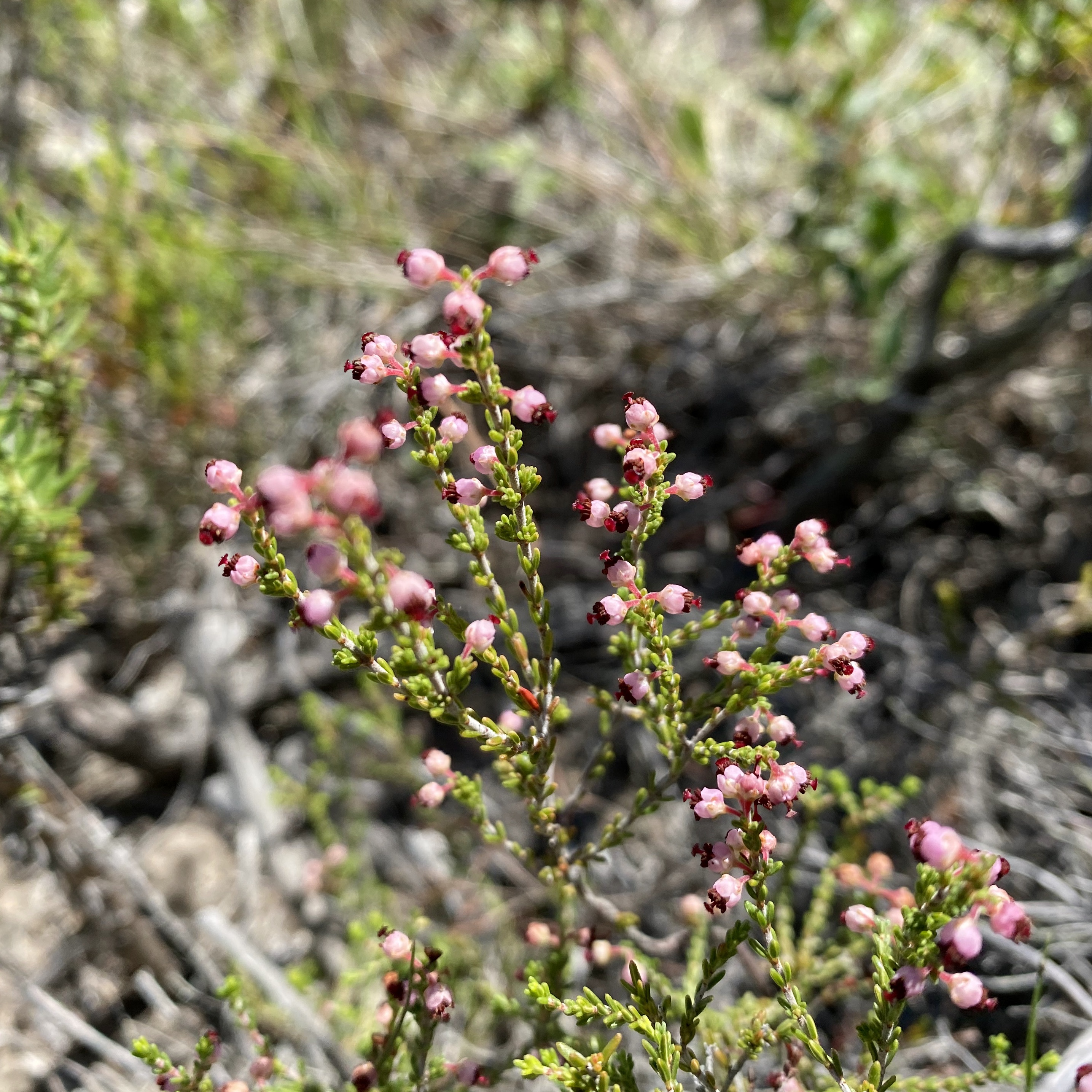







On the evening of our last full day at Gondwana, we noticed the bar was closed. More COVID-19 restrictions were in place. No sale of alcohol, even with meals, was allowed. Even though this reserve was privately owned, the new rules applied. With every new restriction we became more anxious. We still had three nights left in South Africa, at least we hoped we did. We were in constant touch with Qantas and were reassured our flights were still in place.


I find myself irritated at every mention of that child – gone are the days of discipline and knowing how to behave in the presence of others. But oh, those photographs of the wild things and the interesting vegetation… and the bright, blue skies.
I love that you included the early morning and evening images. One can just feel the cold atmosphere in those photographs. And that evening drink shot with the giraffes in the distance is special, Ardys. So many beautiful memories.
LikeLiked by 1 person
We were very irritated by the child too. Even more irritating was the fact that normally children under 6yrs are not allowed on the safaris, but these parents must have caught the manager in a weak moment and she allowed them to bring him. He was the product of overindulging parents and he sought attention ALL the time. His parents would run around after him in the meals area, trying to get him to eat and drink. Everyone noticed it, not just us. We were determined to not let him spoil our experience, but it would have been more relaxing without him. Thank you for sharing your thoughts of enjoyment of the photos. I’m going through photo withdrawal since coming home. While we live in a beautiful place, it’s not the same as having it all laid out and accessible in front of you day after day!
LikeLiked by 1 person
Hi Ardys:
Your animal and landscape photos are beautiful, but I’m really appreciating your flora close-ups. ….and I must say although I know your narrative is approaching its end, I’m not looking forward to your story ending. I’ve so enjoyed taking this virtual travel adventure with you.
Blessings 🌸🎋🍃🌾🌺🌼
LikeLiked by 1 person
Thank you so much Valerie. My intention really has been to share the beauty of the trip and I’m glad to know you have enjoyed the journey. I hope you are keeping well. xx
LikeLike
Am so enjoying this virtual vacation to South Africa…..it’s all truly wonderful but the giraffes are my favorite! Thanks for taking the time to share with us!
LikeLiked by 1 person
There is just something about giraffes that is so exotic and delightful, perhaps it is their impossible looking shapes and gentle nature. So glad you are enjoying the saga. xx
LikeLike
I’m pleased you and Littlesundog echo my feelings about the 4yo… it only takes one squeaky wheel be it adult or child to tip the whole cart. When we were in Arnhem Land we had one woman who would not obey directions or rules; not an inexpensive day tour, the distraction was ruinous, and only slightly salvaged by her momentary posing for a photo opportunity at a billabong near a lurking croc. And I smiled at the early morning distance from the early riser; our protagonist too was in full make-up and dressed-to-kill.
However, your Gwondana experience narrative and photographs are remarkable… of course the landscape, attractions and proximity to the wildlife… congratulations on the giraffe shot! They wouldn’t have been lacking for want of underpinning details of the vegetation… however your studies of plants, grasses and flowers are your signature and it wouldn’t be the same without them. Thank you ♡
LikeLiked by 1 person
I can relate to your story about the woman on your tour. There always seems to be ONE. I was thinking of you when I was putting that together. I know not everyone is interested in the environment and minutia that I am, but a few people are. I like that you say it is my ‘signature’, will treasure that comment. xx
LikeLiked by 1 person